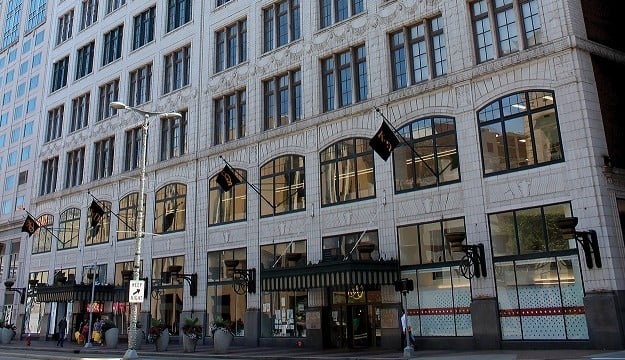
ALAMEDA, CA—Alameda has been planning the redevelopment of Alameda Naval Air Station since the closure of the base was announced nearly 25 years ago. Complicating the redevelopment were a number of issues associated with the site itself, the need for community input and economic cycles but now, the $1 billion mixed-use transit-oriented waterfront development at the gateway to Alameda Point is underway.
In the first of a two-part exclusive, Bruce Dorfman, senior managing director of Trammell Crow Residential's Northern California division, recently discussed the project's history, challenges and other insights on the heels of the firm hiring Brad Mooney as senior project manager for the project.
GlobeSt.com: The development on Alameda has been a long time coming. What were some of the challenges along the way?
Dorfman: Complicating the redevelopment were a number of issues associated with the site including tidelands, wildlife refuge buffer requirements, soil and groundwater remediation, aging infrastructure and sea level rise. Given the scale of the project, there was also extensive community input and demand for considerable community benefits. Finally, economic cycles were a challenge–two prior proposals to develop Alameda Point were derailed by the recessions related to the dot-com bust and mortgage meltdown.
Alameda Point Partners, a venture between Thompson Dorfman Partners, which merged with Trammell Crow Residential in 2015, srmErnst and Madison Marquette, was originally selected by the city to develop the 68-acre Site A parcel back in late 2014. The disposition/development agreement and revised site plan were approved in 2015 with broad support, but work stalled as costs escalated.
Due to scope creep and construction cost inflation, the infrastructure budget grew by 25% while projected revenues were flat. This required changes to the terms of Alameda Point Partners' agreement with the city, and sorting these out delayed us proceeding with the acquisition of the property. Major modifications included re-phasing the project, removal of restrictions on the timing of market-rate housing construction, contribution by the city of water credits and the designation of 70 units of affordable housing for teacher/staff housing. These adjustments allowed Alameda Point Partners to move forward with the scope and the design of the improvements that were so well received by the community.
Fortunately, the city has been a very engaged and responsive partner, and provided great assistance in addressing these and other issues to allow us to implement the development plan. Ultimately, Alameda Point Partners negotiated the sale of several parcels to a number of developers to capitalize the development. These purchases closed simultaneously with the transfer of the first 30 acres of Site A from the city to Alameda Point Partners. The sale of these properties generate more than $70 million to fund infrastructure improvements and other public benefits, including $10 million for the new ferry terminal, $3 million for affordable housing and $1 million for a sports complex.
GlobeSt.com: What does the site offer that makes it a good fit for this development?
Dorfman: Fundamentally, Alameda Point is tremendous real estate. It is one of the few developable waterfront locations on the San Francisco Bay and offers stunning views of the city's skyline as well as access to the Bay. Alameda has strong demographics, good schools and charming small town character. It is also centrally located near the transit and highway grid that provides access to the entire region. The new transit connections being added as part of the redevelopment of Alameda Point, including a new ferry line with direct service to San Francisco, will not only allow commuters to be close to their jobs but also get there quickly. And Alameda, a city of 80,000 people, has not seen any new multifamily development for more than 40 years due to a moratorium on high-density housing that was implemented in the early 1970s. There is considerable demand for quality housing locally which will only increase as new jobs are brought to the naval base. Plus, the ability to create new open space, community amenities and parks will be great amenities for residents and businesses.
© Touchpoint Markets, All Rights Reserved. Request academic re-use from www.copyright.com. All other uses, submit a request to [email protected]. For more inforrmation visit Asset & Logo Licensing.







